 Our World
Our World  Our World
Our World  Weird Stuff
Weird Stuff 10 Fascinating Facts You Might Not Know About Snow
 Miscellaneous
Miscellaneous Top 10 Things Crypto Was Supposed to Change & What Actually Did
 History
History 10 Huge Historical Events That Happened on Christmas Eve
 Music
Music 10 Surprising Origin Stories of Your Favorite Holiday Songs
 History
History 10 Less Than Jolly Events That Occurred on December 25
 Weird Stuff
Weird Stuff 10 Funny Ways That Researchers Overthink Christmas
 Politics
Politics 10 Political Scandals That Sent Crowds Into the Streets
 Weird Stuff
Weird Stuff Ten Bizarre Facts About The Doge Meme
 Our World
Our World 10 Ways Your Christmas Tree Is More Lit Than You Think
 Our World
Our World 10 Archaeological Discoveries of 2025 That Refined History
 Weird Stuff
Weird Stuff 10 Fascinating Facts You Might Not Know About Snow
 Miscellaneous
Miscellaneous Top 10 Things Crypto Was Supposed to Change & What Actually Did
Who's Behind Listverse?

Jamie Frater
Head Editor
Jamie founded Listverse due to an insatiable desire to share fascinating, obscure, and bizarre facts. He has been a guest speaker on numerous national radio and television stations and is a five time published author.
More About Us History
History 10 Huge Historical Events That Happened on Christmas Eve
 Music
Music 10 Surprising Origin Stories of Your Favorite Holiday Songs
 History
History 10 Less Than Jolly Events That Occurred on December 25
 Weird Stuff
Weird Stuff 10 Funny Ways That Researchers Overthink Christmas
 Politics
Politics 10 Political Scandals That Sent Crowds Into the Streets
 Weird Stuff
Weird Stuff Ten Bizarre Facts About The Doge Meme
 Our World
Our World 10 Ways Your Christmas Tree Is More Lit Than You Think
10 Journalists Who Went Undercover Into Horrifying Situations
Journalists are often painted as people willing to do anything to get to the truth, and sometimes, that’s absolutely accurate. One of the most famous investigative journalists is Nellie Bly, who lived an incredible life. In addition to taking on Jules Verne’s “Around the World in 80 Days” challenge, she also had herself committed to an insane asylum for 10 days. The story of her work exposing the conditions at the Women’s Lunatic Asylum on Blackwell’s Island is one of the most famous cases of a journalist willing to do anything to get the story. However, she’s not the only one that’s gone to some pretty extreme lengths to expose the truth.
10 Walter Francis White
Southern US Racism
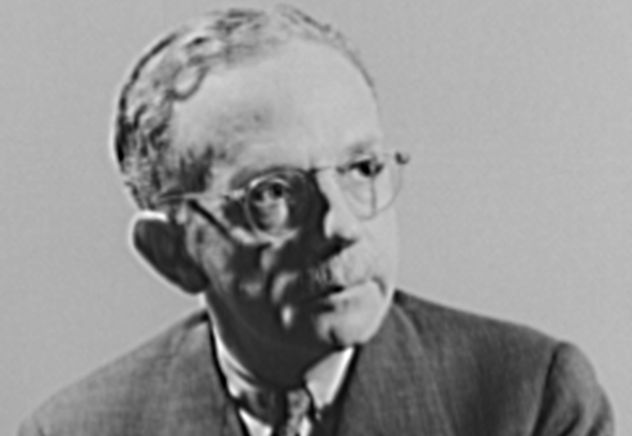
Born in Atlanta, Georgia, in 1893, Walter Francis White grew up as a witness to some horrible things. When he was 12 years old, he saw the unfolding of a race riot that engulfed the city, killing and injuring hundreds of people. The experience not only shaped his childhood, but his future career as a journalist. Light-skinned and blue-eyed, White was in a unique position. He could pass as a white man, although he had been born into a black family—which was evident, when he, his parents, and his siblings were among those threatened during the 1906 riots.
Graduating from Atlanta University in 1916, White quickly became a member of the NAACP. By the next year, the acting secretary was traveling across the South, attending and investigating organized lynchings and race riots as a white man. From 1918–29, he went undercover at eight race riots and 41 lynchings, talking to those that were involved in starting the violence, gaining their trust—and their testimonies—which would then be published through the NAACP.
His reports were serialized in newspapers across the country, and his books debunked some of the major theories about hate crimes. One of the most often-repeated stories used to justify racial violence was the need to protect white women against sexual violence. White was not only able to show how untrue that was, but he was also able to provide the other side to the story, telling of the absolute terror and fear of physical violence that the South was living under.
White would go on to rise through the ranks of the NAACP. Even though he had a number of close calls in his undercover work, he went on to work alongside men serving on the front lines during World War II, reporting on the impact that race had on their treatment by their own country.
9 William Mueller, James Metcalfe And John Metcalfe
Nazi America
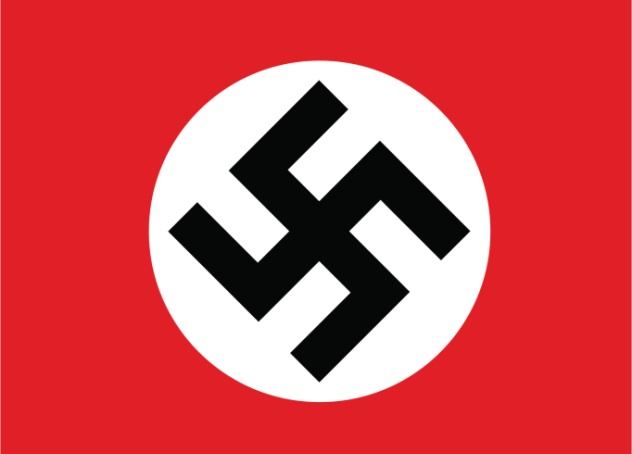
Before the beginning of World War II, there was a definite threat of the Nazi ideals taking root in countries outside of Germany. In the late 1930s, a group called the German American Bund was setting up shop in the United States. Over the course of a few years, the Bund gathered around 25,000 members under the leadership of Fritz Kuhn, who held the title “Bundesleiter.” In 1937, the Chicago Daily Times sent a few of its reporters undercover into the organization to see just what was going on there.
The Bund had all the anti-Semitic and pro-Nazi literature you could possibly imagine. They had their own elite guard, the Order Division, and they had a series of so-called training camps across New York and New Jersey. They held rallies, all with the goal of liberating America in the same way that Hitler was liberating Germany. After spending several weeks undercover in the organization, the reporters ran a massive expose that was about as well-received as you can probably imagine.
They reprinted parts of a Nazi primer, featuring such charming poetry as, “Hunch backs and crooked noses, / Disgusting creatures in their looks, / Their manners and their poses.” They talked about how the heads of the army had convinced their followers that they were ready and waiting for seize control of America for “white Americans,” published pictures of those smiling Americans delivering salutes to the Nazi ideals, and even ran a picture of the uncanny resemblance between Hitler and one of the undercover reporters, showing just how well they’d infiltrated the group.
The fallout was almost immediate, with thousands more people showing up to Bund rallies—but not in the spirit that the American Nazis had hoped for. Kuhn was run out of town again and again, his brave face failing miserably when the police attempting to protect him and keep the peace were overrun. Eventually, by 1939, Kuhn was in jail, found guilty of embezzlement.
8 Madeleine Doty
Women’s Prisons

On November 3, 1913, Maggie Martin was sent to the New York State Prison for Women at Auburn. Prisoner 933 wasn’t actually a prisoner, though; she was writer and reformer Madeleine Doty. In the book she wrote after her experience, Doty reflects on the knowledge that reformers like herself and her associates are helping to bring about a revolution in the way prisons are run and prisoners are treated. She needed to see firsthand, though, just what it was like being on the inside. She reflected that she was scared but excited, and that she wished that she looked stronger than she did, hoping that she wouldn’t be an easy target.
Doty’s reporting helped change the face of female prisoners. At the time, she feared for her safety from women that she believed were strong and rather masculine, the sort of people who still embodied a primitive type of humanity. The criminal theories of men like Cesare Lombroso were still in full swing, and ultimately, Doty would help turn those theories on their heads. The female offenders whom Doty was going to be living with were seen as irredeemable, and she would tell their stories.
She told of the mice and rats that they shared their cells with, the bad food, the straw pillows, and the work. She also talked about those she met, like Mary, the “jolly child of nature,” who was everyone’s friend and was constantly in trouble for defending others. She talked about patient, meek Christine, with a son born in prison and Harriet, the “Russian Jewess” with a fondness for Dante and Shakespeare. And she had her heart broken by the story of Rose, a mother at age 17 who was desperately in love with a married man and convicted of selling stolen goods. In the end, Doty’s works gave imprisoned women a face, experiences, personalities, and histories beyond what criminologists commonly reduced them to and began an era of reform—even though her undercover experiment was cut short by two days after she started to feel “on the verge of a breakdown.”
7 “Anna Erelle”
IS Recruitment

Journalists going undercover to expose something truly horrible might seem like it’s something of the past, but there are still some that will go to terrifying lengths for the truth. She only goes by the name “Anna Erelle” at the moment, because she’s afraid for her life.
The French journalist had been working on European jihadi extremists in the Islamic State for months, with a focus on what makes IS so attractive to a certain part of the young population. She wanted to know just how they were luring so many young women to their cause. After posing as a 20-year-old girl named “Melodie” on social networks, she made contact with a French jihadi called Abu Bilel.
The journalist progressed from Skyping briefly with him, to long talks, to eventually agreeing to run away from home and join him in Syria as one of his wives. Plans were made after months of conversations, and she was given instructions by which she (and another young friend) were to head to first Amsterdam, then to Istanbul, and then to a border city with Turkey. Plans changed; she was to be sent to Urfa . . . and she broke off contact.
Erelle made it as far as Amsterdam when the plans were changed, and she—and her editors—decided it was no longer worth the risk. Originally intending to make the trip with photographers instead of the young friend that she had originally said, Erelle released what information she had gotten on the recruitment process that the terrorist cells were using.
Her profile was immediately bombarded with threats and terrifying messages. She no longer uses her real name, lives in her own apartment, or keeps a phone number for very long. There are now videos of her online, along with judgments that Bilel and his associates have issued against her. Safety precautions haunt her everywhere now, and most likely always will.
6 W.T. Stead
Child Prostitution
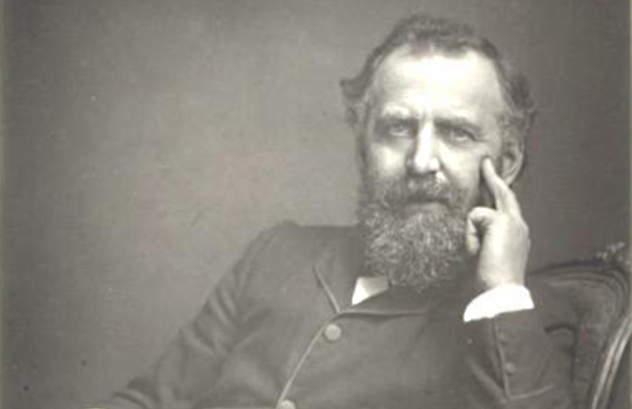
W.T. Stead was a pretty strange spiritualist who claimed to be able to channel any number of spirits, but he was also a crusading journalist who did some pretty incredible things when it came to exposing the realities of child slavery and prostitution.
Stead partnered with the Salvation Army in a sting operation in London in the 1880s. For five days, London papers ran the ongoing story of his experiences posing as a well-off gentleman hanging out on Charles Street who was looking to purchase a young girl for his very own. Approaching a brothel owner on the guidance of a member of Parliament, Stead requested to take delivery of a couple of girls who were accompanied by a doctor’s certificate authenticating their virginity. The brothel owner agreed and went in search of some suitable girls whose parents were willing to sell.
Stead ultimately bought a 13-year-old girl named “Lily” for £5 total. The mother, who had been rather desperate to sell her, would get £3 when her daughter was delivered to Stead and the rest when a doctor had verified that she was still a virgin. Stead described the young girl as industrious and intelligent, able to read and write, and a loving child who didn’t deserve the drunken mother who was willing to sell her for some quick cash. He also uncovered a corrupt group of midwives and doctors who would attest to the child’s virginity. In addition to the certificate, they would sell the buyer a phial of chloroform as well as reassurances that they would help the child afterward if it was needed.
London was outraged, and Stead went to jail—not for purchasing a 13-year-old girl, but because he had only gotten her mother’s permission to buy her and not her father’s. Stead continued to write and edit the paper from his jail cell. In the end, he succeeded in getting laws regarding the age of consent changed, and he also spearheaded reforms that made legislation against prostitution more strict.
5 Frank Smith
Mental Hospitals
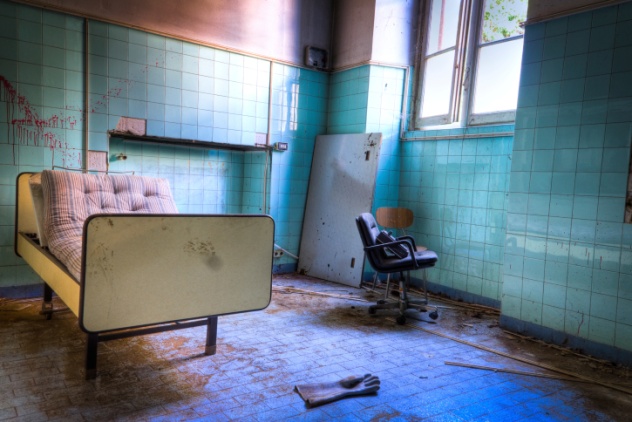
Nellie Bly wasn’t the only undercover reporter to bravely head into the notoriously bad conditions of an insane asylum. In 1935, a Chicago Daily Times reporter named Frank Smith spent a week in the Kankakee State Hospital for the Insane. Supposedly committed by his brother, Smith was actually entered into the system by another reporter from the Times posing as a family member. He described it as seven days of Hell.
When Smith published his 10-part expose, one of the first things he mentions is the dirty, contaminated water and the communal drinking cup. A single cup was shared by all patients, both those who are physically healthy and those who are suffering from the common illness—syphilis. Part of the reason for his commitment was his supposed issues with violence, and he wrote that while he was less than thrilled about being sent into the hospital in the first place, it soon became clear just how bad of a week he was about to have when he spent 15 hours strapped down in a bathtub full of dirty river water as a supposed cure for his violent tendencies. He also talked about the fire-trap halls, something that hadn’t changed since a fire in 1885 that cost 17 patients their lives.
When he checked himself out (he was admitted as a voluntary patient), he found his bottle of whiskey missing out of his things when they were returned to him. He hoped he would never see the inside of the prison again. Shockingly, though, it wasn’t until the 1960s that things began to change at the hospital, and the last of the mentally ill patients weren’t moved out until 1974.
4 Carmelo Abbate
Hypocrisy In The Vatican
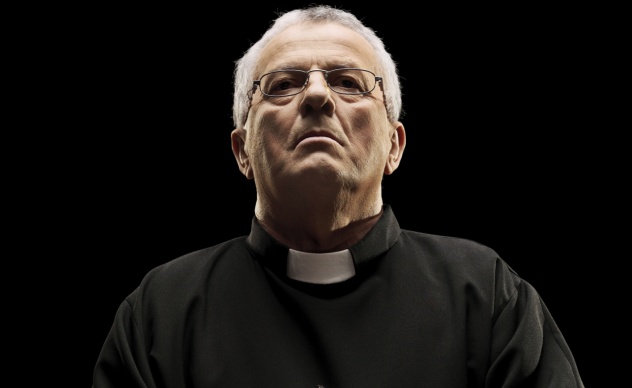
The Vatican and the Catholic Church are still one of the most powerful organizations in the world, and going up against their teachings and their doctrines can be a pretty intimidating thing, especially if you go about it like Carmelo Abbate did.
In 2010, the Italian journalist went undercover among the inner circles of the Vatican’s priesthood, posing as the boyfriend of one of the men, who was already involved in the private parties and the escort services run throughout Rome. When Abbate released his findings—including a book and videos that he’d taken of three of the Roman priests—he made it clear that he wasn’t targeting them because they were gay; he was targeting them because they were hypocrites. He’s also quick to separate his work from the other major sex scandal within the Church—child abuse.
While undercover, Abbate got a firsthand look at just how heavily the escort services in Rome depend on priests for their success and trade. The problem he has is with the difference between the treatment of straight and gay priests. Technically, since they’re all supposed to be celibate, it shouldn’t even matter. He found, however, that it does.
The Catholic Church fired back, trying to play the “offensive stereotype” card. However, the Vatican has remained pretty silent on the whole thing, while Abbate says that the extreme hypocrisy and double standards need to be stopped. Some are going as far as using his findings to point out that the Church is focused more strictly on the orientation of their clergy members rather than the deviance they’ve unfortunately become known for.
3 George Morrison
Blackbirding

Blackbirding is the name of a shady program for recruiting people to become indentured servants. Throughout the 1890s and up until around World War I, groups of ships would go island-hopping throughout the Pacific. Recruits would be picked up and signed to contracts, where they would agree to go work on plantations for a certain amount of time. That was the theory, at least, but it was absolutely up for debate on how well these contracts were explained, how willing recruits were, and whether or not it was just a fancy way of collecting more slaves.
In 1882, George Morrison was a medical student in need of a break from school. Wanting to get an intimate look at the so-called blackbirding process and the labor trade, he signed on as a seaman and doctor’s assistant on a ship called the Lavinia. His original story read more like a travel blog than an expose of any real note, but it inspired him to turn from medical school to journalism.
His follow-up painted blackbirding as the weakly disguised slave trade that many had always thought it to be. He described the intimidation techniques that were used to get people to sign on, such as holding people at gunpoint until they agreed to their contracts, the poor health conditions, the lack of sanitation onboard the ship, and the treatment of women, calling some of the ships little more than brothels. Further questioning the legality of the practice, he pointed out that the people often in charge of things like health regulations and approvals were the ones that owned the ships, making it less than likely that they were being very honest.
His condemnation got the attention of various government officials, who either supported him or condemned him, depending largely on whether or not it was in their best financial interests to do so. It wasn’t until Britain got involved that there was at least the establishment of a regulatory committee in the form of deputy commissioners, backed by an increased number of naval vessels.
2 Marvel Cooke
The Bronx Slave Market

Marvel Cooke was born in Minnesota in 1903, and by the 1950s, she was living in New York City and working for The Daily Compass. It was there that she wrote The Bronx Slave Market, an expose on the practices of upper-class women who would hire day laborers for a pittance, as well as the difficulties that the laborers would face day after day.
Cooke joined the women she saw standing on the street corner every day. They would line the streets, hoping to appeal to someone looking for a housekeeper. When Cooke joined them, she was hired by an elderly woman at a rate of $0.80 an hour, while the going rate established by the Domestic Workers Union was $1 an hour. Her first experience was one she’d heard about: The slave market employers would claim that the work that was done was so subpar that they would refuse to pay—no matter how well they’d actually done the job. Some, she was warned, would pay them less or turn the clocks back to make them work longer. She also got a firsthand look at the men that would prey on the women looking for work. The unmistakably straightforward, lewd advances made the degrading search for work even worse.
After an entire day of dusting, laundry, being ordered around, and scrubbing floors on her hands and knees, Cooke had her story: The slave trade was alive and well, thriving on the streets of New York. Part of the solution wasn’t just the organization of a Domestic Workers Union but more locations and a wider opportunity for women to join it and be protected by it. Cooke’s undercover work exposed the life of a group of women too afraid to join the protection of a union for fear of the benefits they relied on being taken away. She ultimately pushed ahead legislation to protect domestic workers, education, and the establishment of accessible unionization.
1 Antonio Salas
Extremist Terrorism
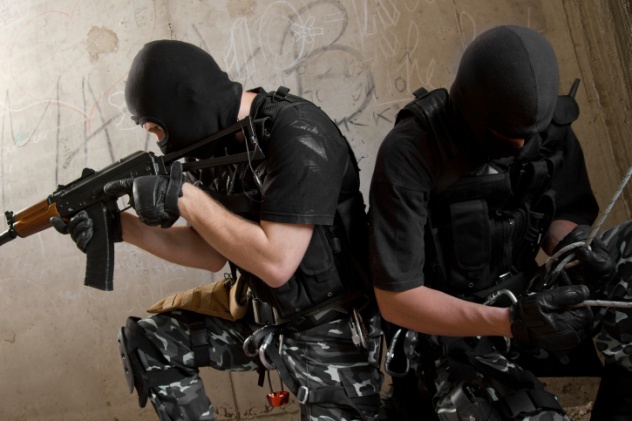
“Antonio Salas” (a pseudonym) has successfully taken undercover, investigative journalism to the extreme. He’s gone undercover to expose child trafficking rings and into the world of the skinhead supporters of the Real Madrid football league, and he’s most recently gone undercover as a radical Islamist after the 2004 bombings in Madrid.
After learning Arabic, getting a circumcision, and writing his own copy of the Quran by hand, he wrote a couple of books to give himself credibility and invented an incredibly tragic backstory about the death of his pregnant wife. Eventually, he would make contact with—and become a trusted ally of—one of the terrorist world’s most notorious assassins, a man named Carlos the Jackal.
He met the Jackal’s brothers and family and eventually became his confidant, friend, and webmaster. The website had been put together in hopes of raising support to have the Jackal returned to Venezuela, and while Antonio was running it, he taped his frequent conversations with the Jackal along with what turned out to be murder confessions. He took training courses in how to be a terrorist, and the Jackal occasionally called him from jail, just to make sure he was safe.
And, incredibly, he did it all without the backing of any sort of government intelligence agency, police security, or even official media credentials. Traveling is limited sometimes, as he has to do it under his real name and with his real passport. He says that his family has been under police protection since his time undercover in the human trafficking ring, and most of his friends aren’t even aware of the double life he’s living. He talks about friends who sit and discuss the books, movies, and exposes of the investigative journalist Antonio Salas, having no idea that they’re talking to him.
And as for the danger he puts himself in all the time? He says, “My conscience is clear, and even if they catch me, I’ll go having made sure I’ve lived my life to the fullest. I learned all I could and tried to do something useful.”








